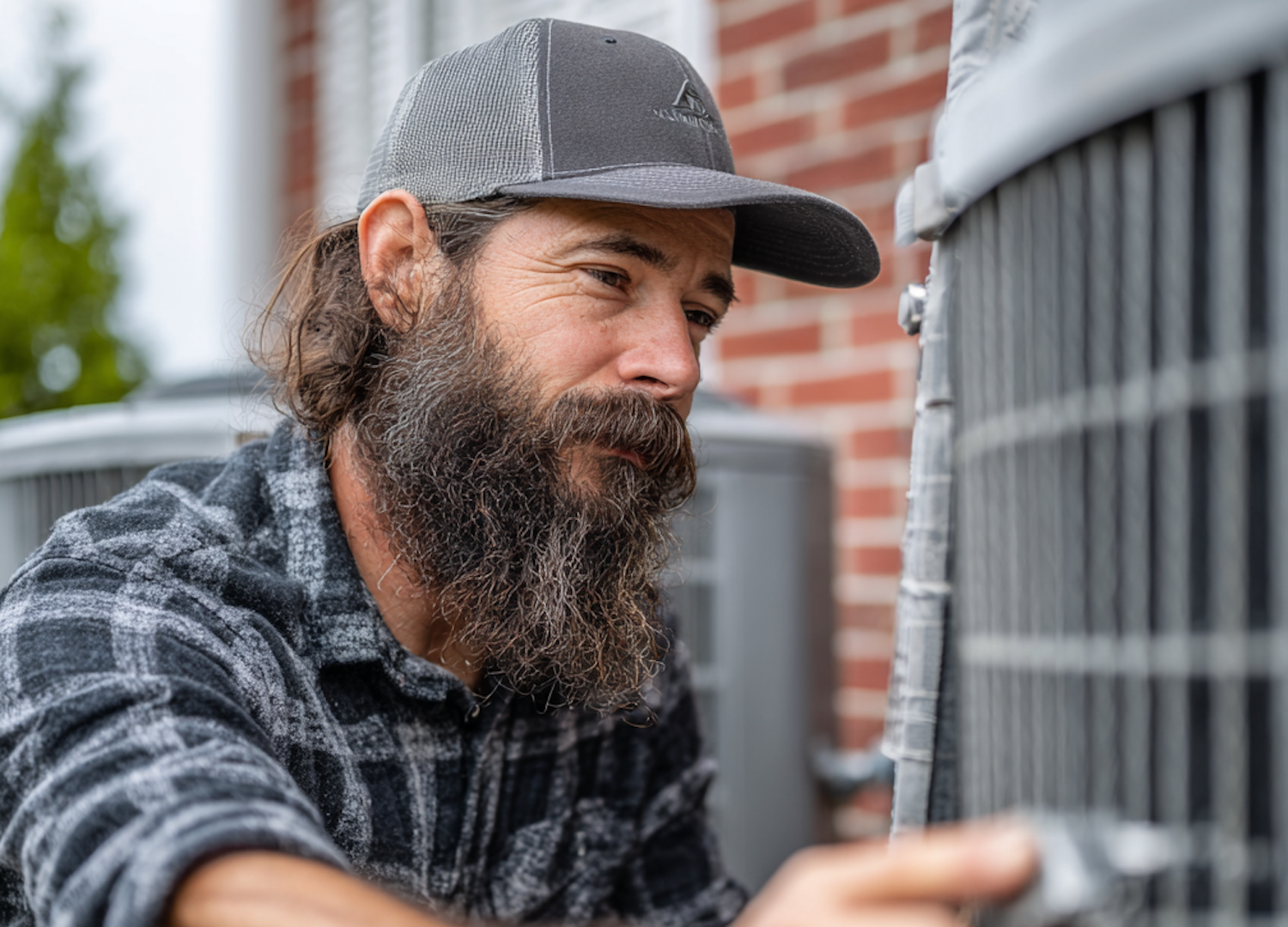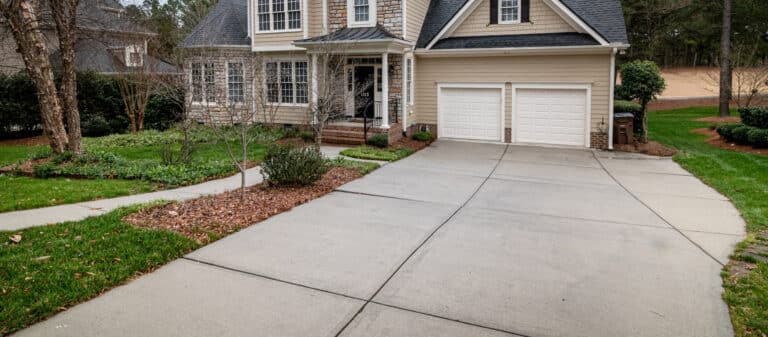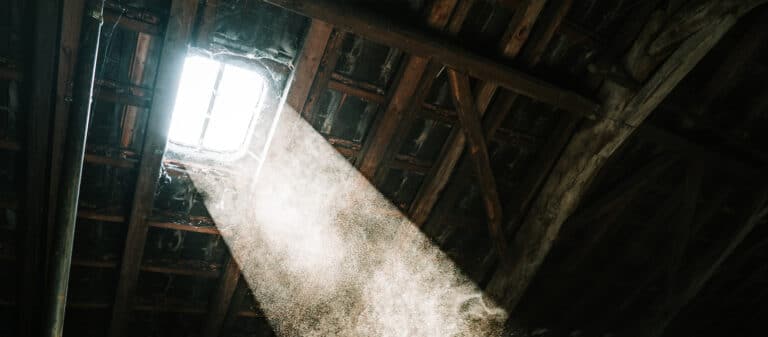Heating and cooling bills account for Northeast Pennsylvania’s largest share of energy use.
As natural gas and electricity rates rise with time, one of the only options for homeowners to control their utility bills is to reduce the amount of energy they consume.
Shutting off the lights and limiting screen time may be a good start to lowering your energy bills, but it’s rarely sustainable. Instead, implementing new technology, such as a smart thermostat and insulation, can significantly lower your monthly energy bills without sacrificing comfort.
This guide will share all practical ways that you can save on your energy bills in Northeast Pennsylvania.
1. Seal Air Leaks Around Your Home
You may think those four walls and a roof are strong enough to block away outside elements, but small gaps and cracks can quickly form over time due to pests, foundation settling, and other age-related causes.
Every opening in your home allows air from a heated or conditioned space, forcing your HVAC system to work harder to compensate for that lost air.
If these air leaks persist, it can lead to lower HVAC lifespans and higher monthly energy costs.
Start by sealing off any small openings in your home with caulk, expanding spray foam, or weatherstripping that can help plug any gaps. Some common leak points to inspect and seal include:
- Around windows and doors – Install door sweeps and weatherstripping around frames to seal out cold air in the winter.
- Gaps where pipes and wires enter your home – Use expanding spray foam to fill lap gaps.
- Recessed lighting fixtures – Install airtight baffles or retrofit kits designed for IC-rated cans to prevent warm air from escaping into the attic.
- Attic access hatches – Add weatherstripping around the hatch perimeter and glue rigid foam insulation to the back of the panel to minimize heat loss.
- Chimney or flue areas – Use a chimney balloon or specialized flue draft stopper when the fireplace is not in use to block drafts (just remember to remove it before lighting a fire).
For larger gaps in your attic roof, professional air sealing may be required, as this is often the number one source of air loss in most homes.
2. Upgrade Your Insulation
Insulation acts like a thermal blanket for your home. Without enough of it, your HVAC system has to work much harder to maintain a steady temperature.
In NEPA’s seasonal climate, the attic is usually the biggest culprit. Heat rises, so in winter it escapes through the roof, and in summer, heat from the sun radiates down into your living space.
Upgrading your insulation doesn’t necessarily mean buying the strongest materials.
In fact, you can save money by achieving the right R-value with energy-efficient materials, such as spray foam, by following EnergyStar’s recommended values.
Insulation recommended upgrades include:
- Attic insulation: Aim for an R-value of R-49 to R-60 for optimal efficiency in our region. Closed-cell spray foam offers the best performance of any insulating material on the market.
- Wall insulation: If your home was built before the 1980s, it may have little to no wall insulation. Blown-in cellulose or spray foam can be added without major renovations.
- Basement and crawl space insulation: Prevents heat loss through the floor and reduces moisture issues.
Insulation can improve home comfort while reducing heating and cooling bills by 20%.
3. Service Your HVAC System Regularly
A poorly maintained furnace or air conditioner will work harder, consume more energy, and break down sooner.
Generally, your HVAC system should be serviced annually, and filters should be changed every 1-3 months, depending on usage.
Angi shares a helpful guide that can help you spot the signs that your HVAC needs maintenance and when to perform maintenance.
4. Upgrade to a High-Efficiency System
If your furnace, boiler, or AC unit is more than 15 years old, it’s probably operating at 60–80% efficiency, meaning a large chunk of your energy is wasted.
There are lots of tax credits and rebates available for modern HVAC appliances, including:
- High-efficiency gas furnaces: Models with AFUE (Annual Fuel Utilization Efficiency) ratings of 95%+
- Ductless mini-splits: Excellent for homes without ductwork; they also provide both heating and cooling
- Air-source heat pumps: Work efficiently even in cold NEPA winters thanks to modern cold-climate designs
While the upfront cost can be significant, federal tax credits, Pennsylvania energy rebates, and lower monthly bills can make upgrading an easy financial decision.
5. Use a Programmable or Smart Thermostat
Why heat or cool your home when nobody’s there? Programmable thermostats allow you to set schedules so your HVAC system runs less when you’re at work or asleep.
You can lower the temperature 7–10°F for 8 hours a day to save up to 10% a year on heating during the winter.
6. Harness the Power of the Sun (and Shade)
Simple, no-cost strategies can make a noticeable difference in your heating and cooling bills.
One of the easiest ways to heat and cool your home during the winter and summer seasons is to harness the power of the sun and its natural light. Some strategies that can help save money include:
- Opening south-facing curtains during the day to let in sunlight during the winter reduces the need for heat. Conversely, closing those curtains at night can help keep heat in.
- Keeping blinds or shades closed during peak afternoon sun prevents the sun from heating your interior rooms.
- Light-colored window treatments can be used to reflect heat during the summer for cooler air.
- Planting shade trees on the south and west sides of your home for long-term cooling during the summer.
7. Address Ductwork Issues
Another source of wasted air from leaks could be your ductwork.
If you have forced-air heating and cooling, leaky ducts could be wasting 20–30% of your conditioned air.
Learn to diagnose the signs of ductwork problems to determine if repairs are necessary:
- Certain rooms are always hotter or colder, no matter what the temperature of the rest of the home is.
- You’re experiencing higher energy bills despite a newer HVAC system.
- You can spot visible gaps or loose connections in ducts and feel air leaking out.
While your energy source and HVAC system are a massive part of your energy costs, you can still save money and maintain comfort during our frigid winters and warm summers with these practical tips.
FAQs
My furnace is 15 years old but still works; should I replace it?
If it’s running efficiently and repair costs are low, you may be fine for now. However, modern high-efficiency furnaces (95%+ AFUE) can lower your bills significantly, and rebates often make upgrading more affordable.
What’s the best way to reduce summer cooling costs in NEPA?
Block heat before it enters your home. Keep blinds closed during the hottest hours, plant shade trees on the south and west sides, and run ceiling fans to circulate air so you can raise your thermostat setting.
Do ductless mini-splits work well in NEPA winters?
Modern cold-climate mini-splits are designed to heat effectively in subzero temperatures, making them a great option for both heating and cooling in our region.











